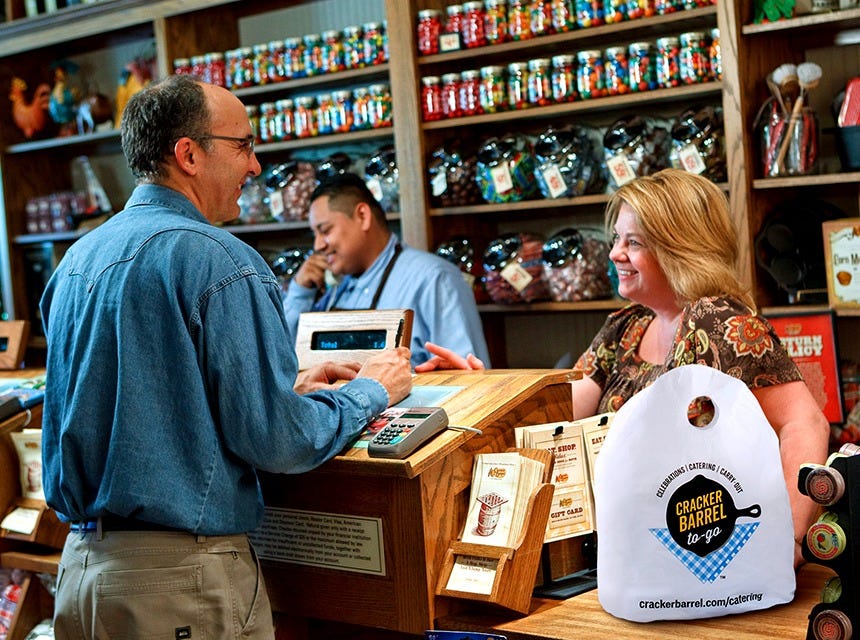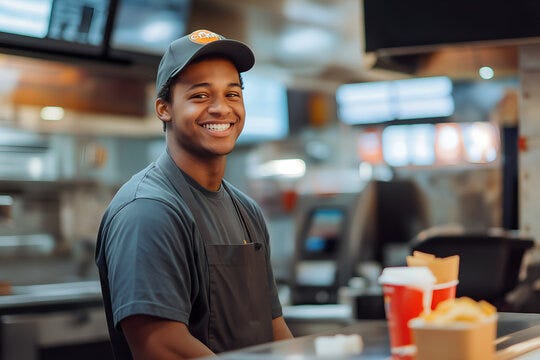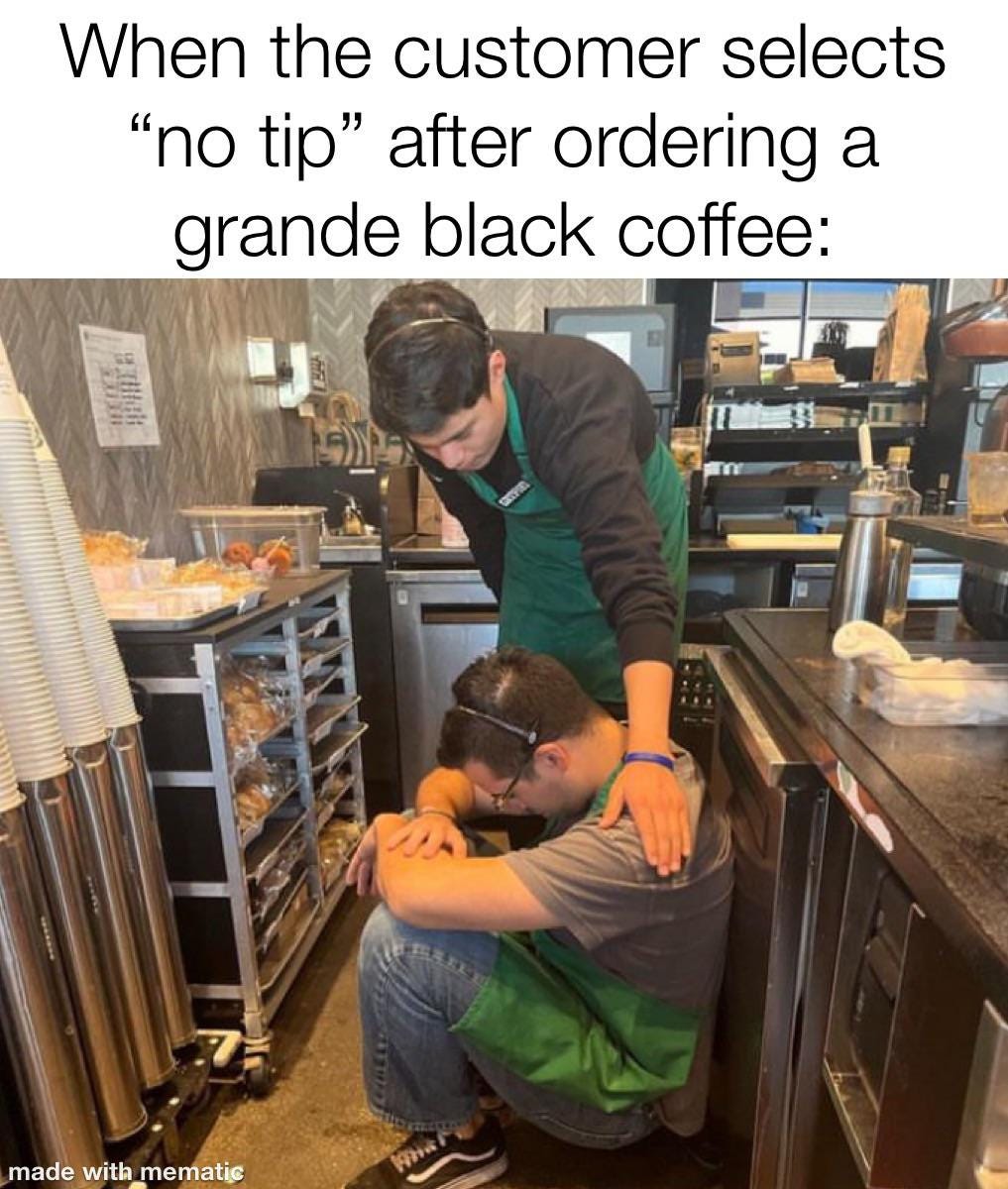I watched the confrontation playing out in the sandwich shop lobby.
The cashier made the first move, swiveling the iPad to the customer, a man in his 30s who, like the rest of us, had just schlepped through the ice and snow to hunt down a meatball sub, jalapeno chips, and lemon-flavored sugar water.
Then, like a warden querying for last words, the tablet asked the inevitable question.
Tension filled the room. Sweat beaded on the patrons' brows as a tumbleweed bumbled across the floor. The Good, the Bad, and the Ugly theme music overtook the lobby speakers.
A mother covered her children’s eyes.
It was so quiet I could hear the man’s heartbeat as he wrestled with his morality:
Why should I tip? I drove through the weather, found parking, walked inside, and had to fill up my drink at the soda fountain while the employees stayed dry, yapped about the latest Dancing with the Stars episode, and munched on Altoids. All on the clock.
But is this the new norm? Do I want to be the one who stiffs? What if they write my name down in a “Stiffer Log” and spit on my sandwich the next time I order?
Finally, it was done. The man pressed a button, the tablet about faced, and the employee handed over the bag.
Whatever his decision, it remains between him, the cashier, and God.
But I could tell he would have trouble sleeping that night, as he struggled to make eye contact with his fellow lobby mates and shuffled away shamefully as if he were smuggling magazines out of the adult bookstore.
Then, it was my turn to step into the dusty street.
Before 2020, there wasn’t much of a debate here. You tipped service people: servers, bellhops, or moving men. Tipping for pickup orders? Maybe occasionally for truly exceptional service, or if you had extra money to throw around.
The norm? Not so much.
But during the lockdowns more than half of Americans began paying gratuities for pickup orders, according to a Bank of America survey.
While tip jars continue to populate counters, and register printers still draw gratuity lines on pretty much every receipt, consumers feel the tip fatigue in 2025.
Is tipping on pickup orders appropriate? Or has the custom tipflated out of control?
Argument: Have a Heart!
I tipped about 24% on a pickup order this afternoon, but it's my favorite BBQ place, and they are working on a holiday. But even on a normal day, I tip more than 15% on pickup orders. -@BJ Nemeth
Main Points
Precedent and Solidarity
Incentive and Recognition
Wage Support
Local Morale
Merchant Support
Point #1: Precedent and Solidarity

In 2020, we hailed medical professionals and others who put themselves in harm's way as heroes.
Of course, there’s no tip jar at the nurses station, but food service workers were a different story.
These folks not only had to risk getting sick in a high-risk environment, but they also had to follow a ton of extra rules and regulations. Tipping recognized that.
Point #2: Incentive and Recognition
Do employees preparing carryout orders not still provide a service? Depending on their effort, they determine whether your food will be adequately prepared, packaged, and maintained at the appropriate temperature.
For catering orders, what about having to carry and load your crap into your car while your dog yaps uncontrollably?
Just because you aren’t sitting at a table, doesn’t mean you can’t throw a bone or two to recognize effort and incentivize better service going forward.
Point #3: Wage Support
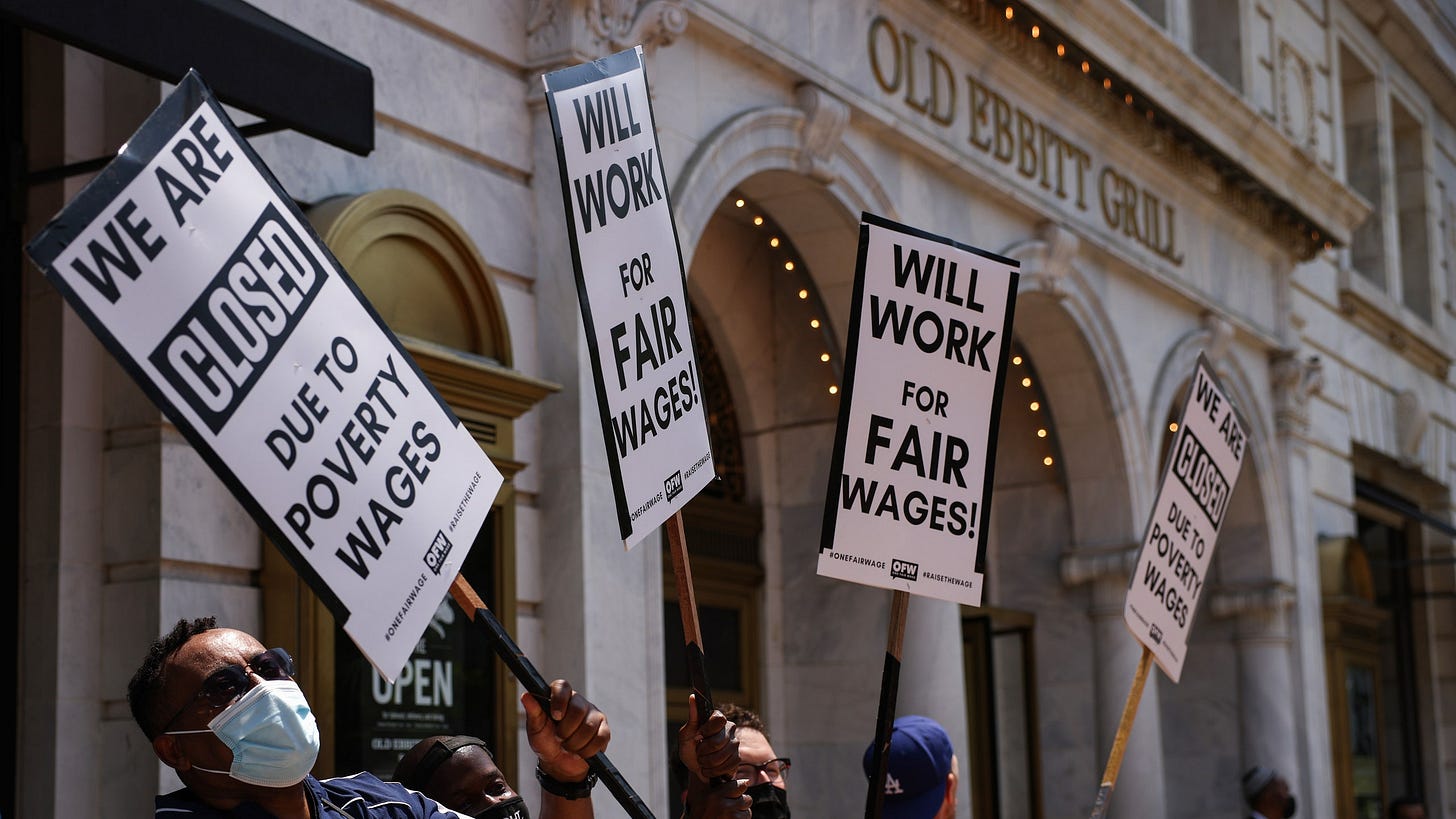
The economy tanked, employees lost hours, and people who relied on tips struggled to grind out a living.
Suddenly, workers were relegated to carry out and drive-thru jobs with flat wages, if they were lucky.
Tipping a little extra went a long way. Let’s continue the trend given the economy hasn’t yet improved.
Point #4: Local Morale

Working in the foodservice industry was never easy, and 2020 didn’t help. Sadly, owners had to decide to close their doors if the numbers didn’t add up.
Why not have some humanity and toss a lousy dollar in the jar for your fellow struggling neighbor?
Even in more prosperous times, especially at your favorite establishments, show appreciation to those who prepare your meals, regardless of how you receive your order.
Point #5: Merchant Support
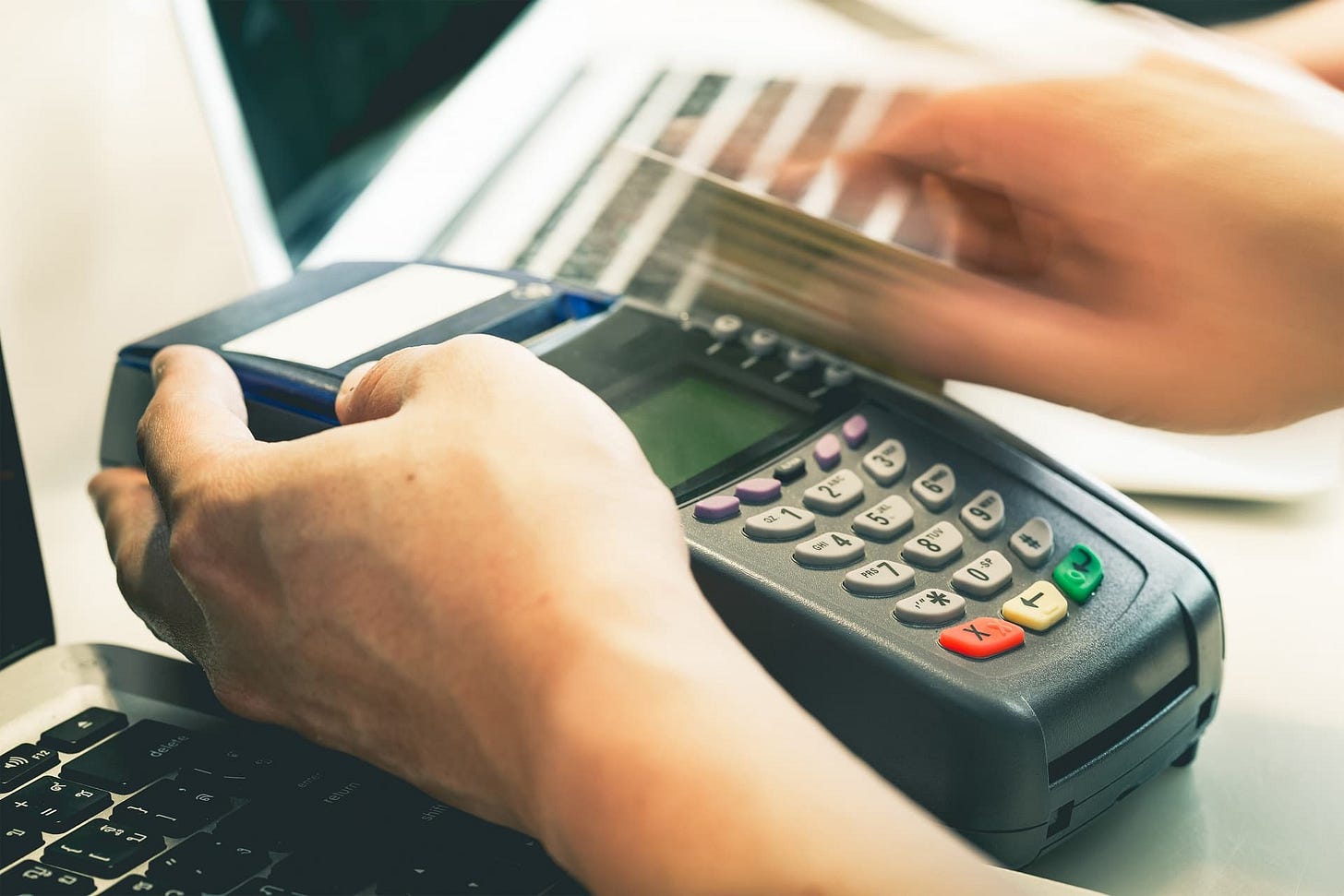
All those extra containers, masks, cups, straws, and 78 napkins you grabbed, only to use two and stick the other 76 in your junk drawer to sit for three years, cost restaurant owners money.
You may also not know that the merchant must pay a processing fee every time you swipe your credit card. Help your favorite BBQ spot remain profitable by tipping on pickup orders.
Also, whether restaurants offer tips for all staff is a major determining factor for potential recruits. With the job market in the toilet, business owners must remain competitive.
Rebuttal: Here’s a Tip, Don’t Smoke in Bed!
I don’t tip because society says I have to. All right, if someone deserves a tip, if they really put forth an effort, I’ll give them something a little something extra. But this tipping automatically, it’s for the birds. - Steve Buscemi as Mr. Pink, Resovoir Dogs (1992)
Main Points
Service, Not Standing
I Don’t Own This Place
Tip Fatigue
Inconsistent Standards
Reduced Incentive for Fairness
Point #1: Service, Not Standing
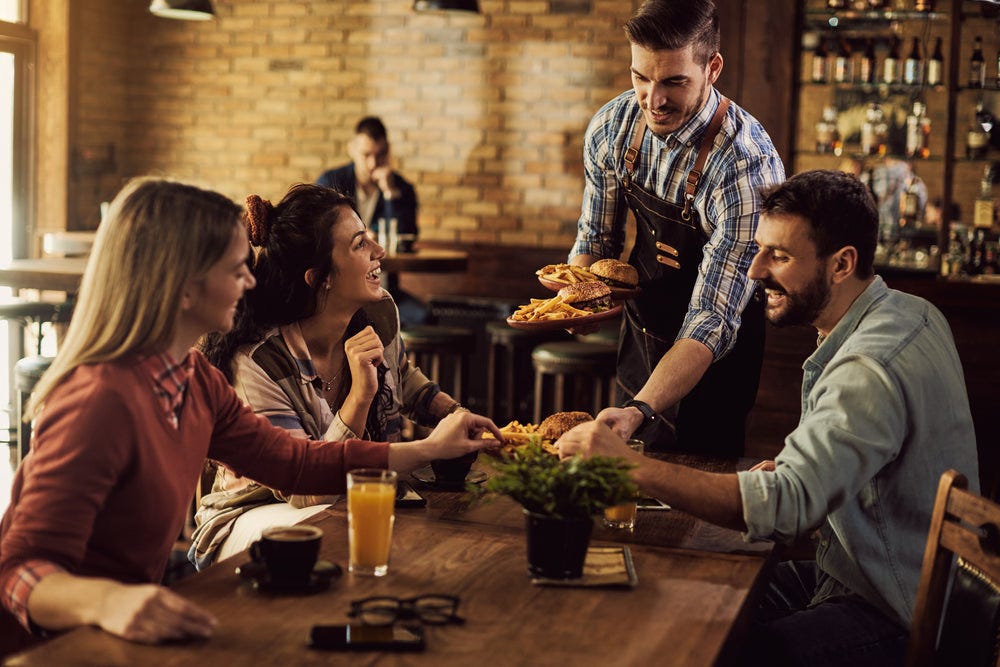
If you pay before you eat, don’t tip. If you pay standing up, don’t tip.
We tip to recognize exemplary service, not being on the clock.
Like Mr. Pink said, OK fine, if someone really makes an extra effort such as waiting to fill up your fountain soda until you arrive so it’s not watered down, or they help carry a catering order to your car, fine, give them a little something.
Other than that, collect your check like the rest of us.
Point #2: I Don’t Own This Place

Restaurant patrons have one role: to be a restaurant patron. When determining gratuity, they don’t need to consider the P&L statements for their local burger joint or paper goods costs at the 24/7 diner.
If employers incur packaging or credit card fees, they should build them into their pricing.
Customers are not responsible for keeping restaurants on financial life support.
Point #3: Tip Fatigue
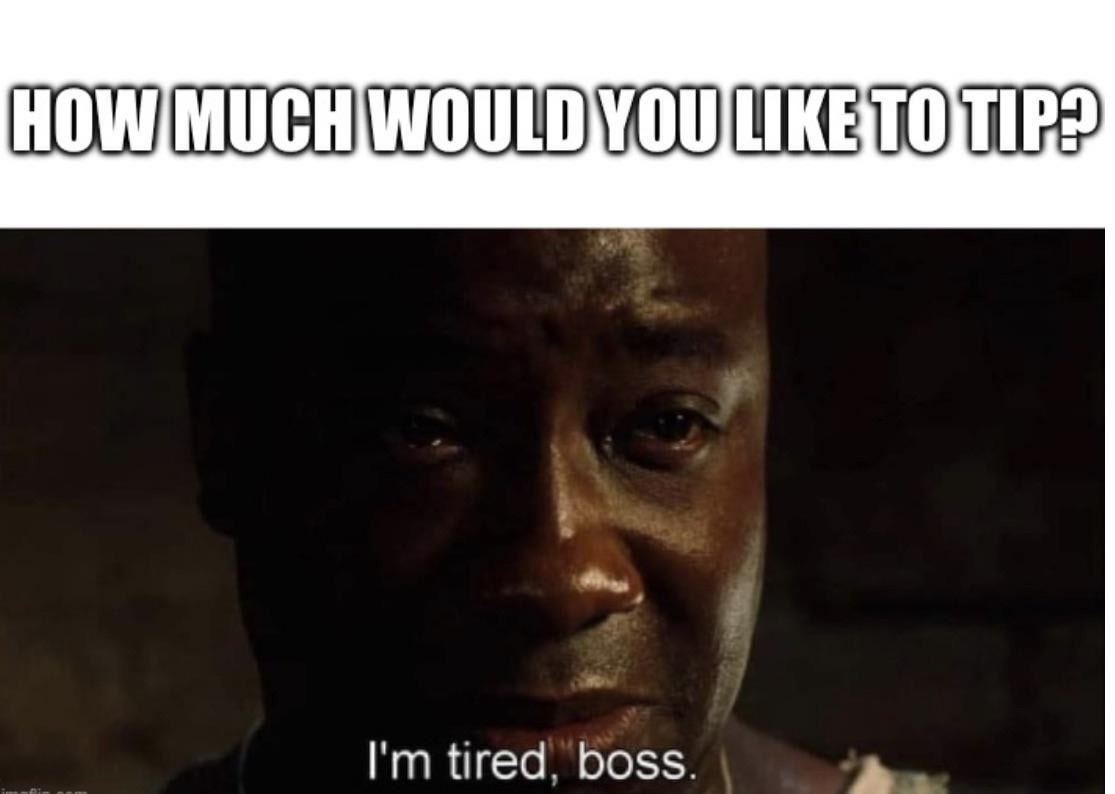
Tip fatigue has exhausted consumers.
Maybe tipping on pick up orders started with good intentions, but the wildfire’s spread out of control.
These overbearing tip jars and demanding gratuity lines might even discourage customers from returning. According to a 2023 Capterra survey:
70% of consumers feel establishments are asking too much
50% feel manipulated at check out with confusion and guilt
53% of consumers have encountered tip screens at businesses that didn’t previously ask for gratuity
Point #4: Inconsistent Standards
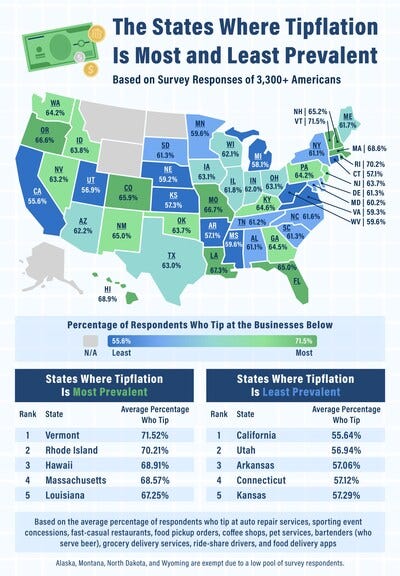
Tipping is out of control, not just in foodservice but in the general marketplace.
No, I’m not tipping you for standing at the register all day offering half-hearted greetings, and I’m certainly not adding gratuity to a self-serving kiosk. Thank you very much.
Tipping for everything is like handing out participation trophies, and both set the next generation up for failure.
Point #5: Reduces Incentive for Fair Pricing
Do you know why the federal wage for servers is $2.13? It’s because they make a ton on tips.
The more customers they get, the more work they do, and the more tips they earn. Fewer customers means less work.
On the other hand, production workers have ebbs and flows in their duties, but they are guaranteed a higher wage. If the burger flippers and milkshake mixers get tips, what’s the incentive for management to offer raises?
Call ‘Em Like Ya See ‘Em

When I stepped up to face off with the cashier and her swiveling iPad, I took both human and machine by surprise.
I’d already cleared leather as I told the employee my name and extended my hand. In it, the ace of spades. Her iPad stood no chance. I had the silver bullet: cash.
I made eye contact with the tip jar on the counter when I arrived, but I didn’t intend to engage after waiting in line.
Paying with cash wasn’t an attempt to avoid the awkwardness of entering zero on the gratuity line. The owner and staff had a fair opportunity to earn an extra buck or two, regardless of payment method.
As a veteran of the foodservice, or restaurant industry, whatever you want to call it, I definitely feel for my brothers and sisters in arms, especially during the lockdowns.
But there’s a limit, and this crew blew it.
While waiting in line, I took stock of the land: crap on the tables, unkept prep area, and poor customer engagement, from what I could tell. The tumbleweed? Turned out to be an empty soda cup someone tripped on and kicked across the room.
Yet the plot twisted when the employee grabbed my food: she noticed the bag was soggy, and the sandwich was about to break through the paper. A poor attempt at securing a sauce dressing, no doubt.
Immediately, she apologized and asked someone to get a new bag with fresh condiments. Nice and dry.
A pardon was granted as I dropped a couple duckets in the jar, of course, making sure she was looking first. “I really appreciate it,” she said with a smile.
“‘Preciate you keeping my saddle grease-free, ma’am.” Then I tipped my hat, and wished her happy trails.
Earned, never given. -United States Marine Corps
GB
What about you? Do you take a hard stance either way? Let me know in the comments.
Meme of the Week:

Brand of the Week: Tiny Revival Clothing Company

After working in the garment industry, Lauren Holland witnessed the horrors of human trafficking. Later, she launched a company dedicated to providing children with high-quality, ethically sourced, and faith-based clothing.
Each purchase contributes to A21, a non-profit organization dedicated to ending modern slavery.
Head to tinyrevival.com for 10% off your first purchase of convertible onesies, kids’ jammies, or adult loungewear. Military or first responder? Check out their service discounts here.
American of the Week:

In January 2022, around 2:00 AM, Fire Station 83 responded to a house fire in Rancho Palos Verdes, California.
Thankfully, the team managed to save the family trapped inside.
Unfortunately, Jon’s tank ran out of oxygen during the battle, and he passed out in a bathroom. His team did not reach him in time.
After a 21-year career, Jon leaves behind his wife Jenny and two sons, Brody and Jack, who were 13 and 15 at the time of their father’s death, respectively. Remember Jon today.






